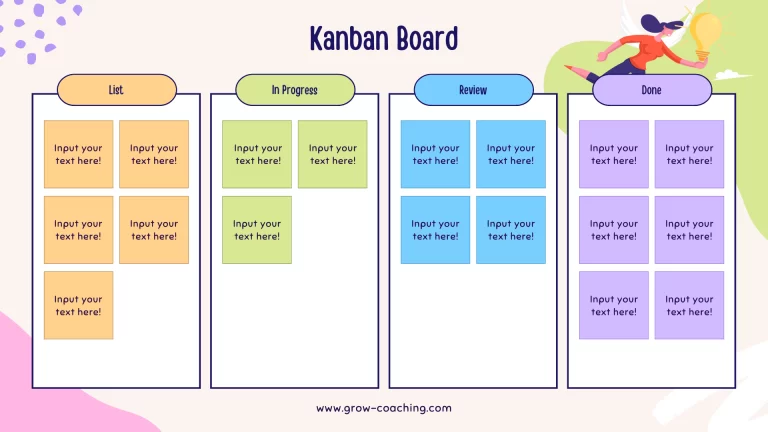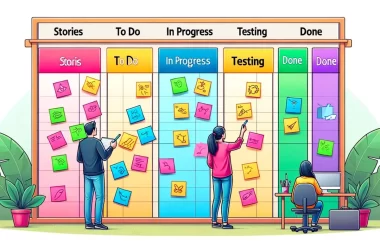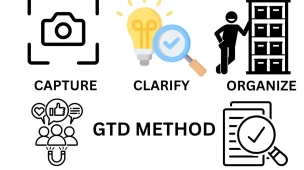Toyota created Kanban Time Management, a tried-and-true time management system, in the 1940s to boost factory output. By visualizing and governing work as it passes through stages of completion, Kanban targets to eliminate hindrances and streamline the flow. This effective method has been helping organizations operate better ever since!
What’s The History Behind Kanban?
The term “kanban” originates from the Japanese words for signboard or billboard. It’s a system designed to make work accessible, with digital or physical cards that visualize each task as it progresses through the workflow. By utilizing kanban, teams gain visibility and clarity around what needs to be done and when so they can collaborate efficiently in order to finish up projects rapidly.
What it Comes to Kanban Time Management System?
- The Kanban Board is a visual workflow system that illustrates the different stages of work using cards and columns.
- It’s simple to use – each column symbolizes a particular stage, while cards represent each task in progress or ready for completion.
- This incredible tool enables you to track your progress at every step and keep everyone aligned with project objectives.
- To ensure the team can focus on completing tasks rather than quickly starting new ones, Work in Progress (WIP) Limits are established. These limits cap how many assignments can be simultaneously processed at each stage of the process to prevent being overwhelmed by an excessive amount of work items.
- The Pull System works to the advantage of your team by carefully managing workloads, ensuring that tasks are only begun when there is adequate capacity and time available. This preemptive approach helps you avoid overloading your resources, keeping projects running in an efficient manner.
- Optimization With No End: Kanban is an ongoing procedure and encourages repeated reviews of the process to identify weaknesses, remove obstructions, and upgrade workflow. Improve swiftly by frequently attending team meetings for a collective assessment as well as making necessary onsite tweaks.
To get started with kanban, team members must first recognize the various stages of their process and craft a Kanban board including slots for each step.
They then produce cards representing every task at hand and put them in the matching column on the board.
The group stipulates Work-In-Process (WIP) limits to each section which they have to meet before commencing fresh tasks; this helps them complete work items faster than usual!
Pros of Kanban Time Management.
- With Kanban, your team will gain improved visibility into their tasks at hand. By making work visible to all members of the group, they can effectively understand what needs to be done and when so that collaboration is maximized.
- Streamlined Workflow: Incorporating WIP limits and a pull system helps to optimize the team’s workflow, ensuring that they are consistently focusing on essential tasks without becoming overburdened.
- Maximized Responsiveness: By having visibility into what tasks need to be completed and when, the team can make agile adjustments in response to shifting priorities and unforeseen circumstances.
- Through the identification of bottlenecks and continuous improvement, kanban can help teams maximize their efficiency and accomplish more in a shorter amount of time.
Cons of Kanban Time Management.

While Kanban Time Management offers many benefits, it also has some potential drawbacks or cons, especially in certain contexts or when improperly implemented:
- Limited Scope for Complex Projects: Kanban is ideal for tasks with a clear flow, but it may not be as effective for complex projects involving multiple interdependent stages or those requiring detailed planning phases.
- Over-Reliance on Self-Management: Kanban requires team members to be proactive and self-organizing. In teams lacking discipline or experience in self-management, this can lead to inefficiencies or neglect of important tasks.
- Difficulty in Scaling: While Kanban works well for small to medium-sized teams, scaling it up for large organizations or highly complex projects can be challenging. It requires meticulous management and potentially additional frameworks to maintain effectiveness.
- Resistance to Change: Implementing Kanban can meet resistance in traditional or hierarchical organizations. The shift to a more transparent and collaborative approach might be challenging for teams used to conventional project management methods.
- Potential for Bottlenecks: Without careful monitoring, bottlenecks can occur, especially if there’s an imbalance in task distribution or skill sets among team members. This can lead to delays and reduced productivity.
- Lack of Timeframe: Kanban doesn’t emphasize deadlines as strongly as some other methodologies. For some projects, especially those with strict timelines, this can be a drawback as it might lead to complacency or misjudgment of urgency.
It’s important to note that many of these cons can be mitigated with proper implementation, training, and adaptation to the specific needs and context of the organization or project.
Conclusion:
All in all, kanban is an effective time management technique that allows teams to visualize and systematically manage tasks as they move through the process. It serves to amplify visibility, flow, agility, and efficiency while fostering a culture of continuous improvement. By utilizing this approach with kanban boards, your team can become more productive than ever before – enabling you to complete tasks faster than ever imagined!











